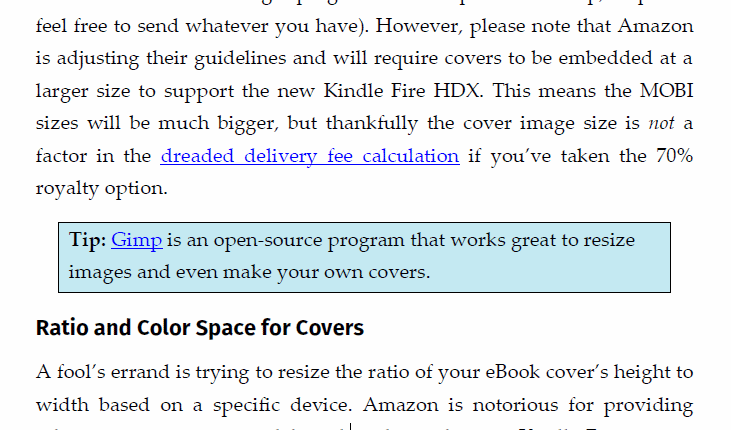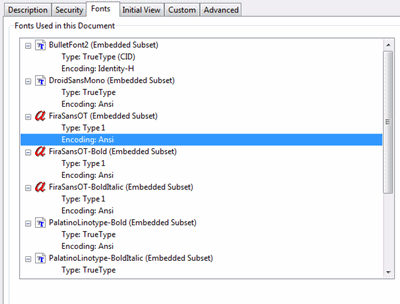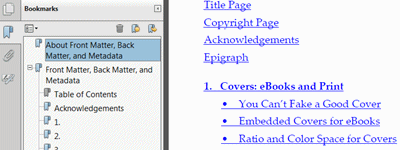Posted on 2014-Aug-05
What is PDF?
PDF (or Portable Document Format) was developed by Adobe over 20 years ago in a gambit to standardize desktop publishing for fixed-format documents. It is a standalone file designed to display documents independent of the device, operating system, and software applications that includes all the text, graphics, fonts, etc. necessary to display independently. PDFs are commonplace in the corporate and governmental world and they can be read for free with Acrobat Reader. PDF also helped the publishing industry with a handy “What You See is What You Get” document so authors, editors, typesetters, and others could see how the document or book would look before going to print. PDF also has the benefit of not being able to be easily edited (unlike a Word document or InDesign file), preventing unwanted modifications from third parties.
However, in the modern world, readers enjoy eBooks on a wide variety of devices (from smartphones all the way to desktop computers), so it’s necessary to have a proper reflowable eBook that will scale to the size of the reader’s device. The reflowable eBooks (EPUB and MOBI) can also have formatting adjusted (e.g., font size, margins) to best suit the reader’s preferences. However, the PDF format is not intended to have anything inside it modified, and it has a fixed page size,. Thus, it is not suitable for reflowable reading. This is the reason why most vendors either abandoned or never sold PDF eBooks.
PDF eBook Usage
While PDF eBooks generally aren’t sold in mass quantities, they do still have some limited purposes as follows:
- For sale on Google Play
- For sale on All Romance Ebooks
- For Advance Reading Copies (for Book Bloggers and other reviewers)
- To provide to Bowker to get an eBook ISBN
- For sale on personal website
Not to be surly, but some of the more technically-challenged book bloggers will have trouble loading an EPUB or MOBI onto a suitable device or software application. Therefore, they only accept PDF: this includes some of the top book bloggers. A PDF eBook does have some benefits: unlike eBooks which may have wonky font support, all embedded fonts will show up properly on anyone’s device or computer. Below is an example of a PDF eBook with the fonts embedded:

Tip: You can check which fonts are embedded in a PDF under File > Properties > Fonts

Additionally all hyperlinks (both external and internal) will work like they would in a reflowable eBook. The Table of Contents will be in the PDF eBook as well as in the metadata, similar to the way an eBook has an HTML and NCX Table of Contents:

A special case is PDF eBooks for All Romance Ebooks. Since many of their users use Calibre after purchasing the PDF, it is necessary to keep the formatting as simple as possible (similar to a Smashwords .doc for their Meatgrinder). For this reason All Romance Ebooks PDFs are best kept in the default 8.5x11” page format in Times New Roman (12pt). This is not pretty, but it is necessary for usability reasons.
A Note on PDF Piracy
It has been brought to our attention from several clients that eBook piracy is getting worse and worse. More nefarious, we have heard reports that dubious book bloggers are taking Advance Reading Copies and attempting to sell them as their own as print books or eBooks. For this reason we do not recommend having page numbers and headers/footers on the PDF eBook like you would for the print edition. Also, it is recommended that images are low-res rather than the high-res required for print.
Requesting PDF eBooks from BB eBooks
For clients who request a print edition, we generally include a PDF eBook at no additional charge. If you need a PDF eBook please feel free to contact us for a quote today.
Label: Technical and Design
comments powered by Disqus